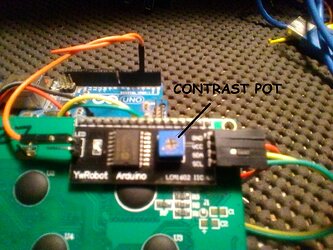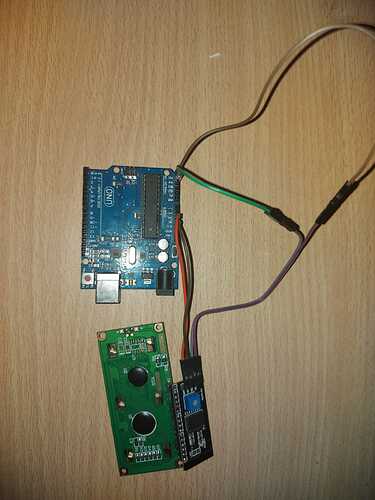Okay, I've been reading and reading and there is no solution for my problem. Please I need help really quickly.
I am trying to make this Lcd 16x2 work with the i2c and Arduino UNO, I tried with a lot of libraries and with all of them I have the same problem (using the Hello world example codes), the lcd shows this black blocks on the first row (and I cant turn on the backlight tho idk)
My connections:
I2c Vcc - 5 V Arduino
I2c Gnd - Gnd Arduino
I2c SDA - A4 Arduino
I2c SCL - A5 Arduino
I2c's led its ON, Arduino's leds are ON, LCD its ON showing the blocks (without the backlight)
By the way sorry if my english its not that good.
One of the examples codes from librarie "hd44780" by Bill Perry
I tried this librarie because i saw that work in other post but now its not ![]()
#include <Wire.h>
#include <hd44780.h> // main hd44780 header
#include <hd44780ioClass/hd44780_I2Cexp.h> // i2c expander i/o class header
hd44780_I2Cexp lcd(0x27); // declare lcd object: auto locate & auto config expander chip
// LCD geometry
const int LCD_COLS = 16;
const int LCD_ROWS = 2;
void setup()
{
int status;
// initialize LCD with number of columns and rows:
// hd44780 returns a status from begin() that can be used
// to determine if initalization failed.
// the actual status codes are defined in <hd44780.h>
// See the values RV_XXXX
//
// looking at the return status from begin() is optional
// it is being done here to provide feedback should there be an issue
//
// note:
// begin() will automatically turn on the backlight
//
status = lcd.begin(LCD_COLS, LCD_ROWS);
if(status) // non zero status means it was unsuccesful
{
// hd44780 has a fatalError() routine that blinks an led if possible
// begin() failed so blink error code using the onboard LED if possible
hd44780::fatalError(status); // does not return
}
// initalization was successful, the backlight should be on now
// Print a message to the LCD
lcd.print("Hello, World!");
}
void loop() {}
